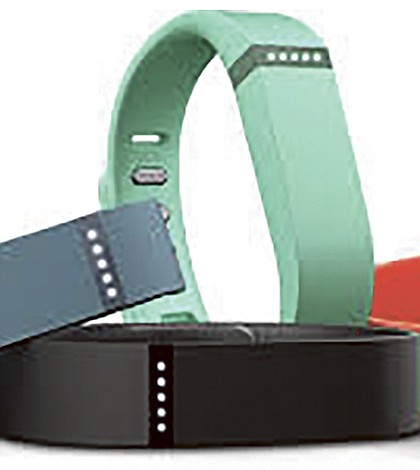- April 26, 2024
-
-
Loading

Loading

Each Saturday morning, they gather together before the sun comes up.
Members of the Winter Garden Runners, they meet up along historic Plant Street prepared to train — right down to the wearable fitness technology on their wrists.
Shannon Vaughn sports a FitBit, Susan Lawless and Courtney Guillen don Nike+ Sportwatches, and Lauren Adams, who has Type I Diabetes, has a DexCom Share device in addition to a Garmin watch.
There’s nothing extraordinary about the level or range of technology the four West Orange women are wearing, either — and that’s the point.
The four are emblematic of a connectivity and data-tracking through technology fitness trend that, perhaps unlike other fitness trends in the past, is creating tangible results and changing the way people look at wellness.
“It’s huge. Tracking is, as you can tell by all the fitness bands that you see on the market … definitely the trend of where it’s going,” Jennifer Brumbaugh, the senior wellness director at the Roper YMCA, said. “It’s also proven that if you track then you are more likely to stick with what you’re doing. When you track, and you can see the progress that you are making, you’re a little more motivated.”
“It’s like our way of being there when they’re working out (between formal sessions),” Brumbaugh said.
It also has created a link among a trainer, the client and the client’s physician.
Dr. Niral Patel, practicing at Windermere Medical Center, has witnessed the way connective fitness technology is changing many people’s approach to wellness, and he and several of his patients utilize the MyFitnessPal application to track calories and nutritional intake.
“My purpose of using (the application) is for (patients) to become aware of their health, but also using that to say, ‘OK, we did all this (diet alteration), but what’s the result?’” Patel said. “When you go back to the doctor, you are able to see that the things that you implemented actually resulted in better health for you, and that’s when the patient is even more motivated to continue what they are doing.”
In an information age, everyday people are making the most of the information available to them to maximize their fitness.
“(The FitBit) makes you aware of where your deficits are every day,” Vaughn said. “When you feel like things aren’t going well in your training, you can look at (the data and ask), ‘What was my sleep like that week? What did I eat?’”
It has been helpful for the quartet of runners both in tracking new, cutting-edge variables such as sleep quality, on down to simple information that can make a big difference.
“It also tracks how many miles you have on your shoes, because you should only have so many miles on your shoes before you replace them,” Lawless said.
For someone like Adams, who has had diabetes for more than two decades and just recently qualified for the Boston Marathon, technology such as the DexCom line of products to monitor glucose levels has emerged as a game changer — even allowing up to five people not present with her on a run to monitor her levels as a safety precaution.
“Combining the data; being able to see where my glucose is at, what direction it’s heading and getting alerts for highs and lows has drastically changed how I can train,” Adams said. “I can see what’s going on, and I could react to it.”
Although variations of today’s technology may have been around longer than many might realize, the ease of which the apps and devices of today are used have helped to launch them into the mainstream.
“It’s super user-friendly: There’s just three buttons … that’s all I need,” Guillen said of her Nike+ watch.
As a testament to that, both Brumbaugh and Patel reported being pleasantly surprised by the way seniors used to the technology, too.
With a national climate of a changing approach to fitness, one in which there is more of an emphasis on general “wellness” and a desire to be more proactive and less reactive, the ability of fitness technology to provide the connectivity that people crave — and data they can apply to their lives — doesn’t appear to be going anywhere anytime soon.
“At the end of the day, (these devices) are about making the patient become aware and to see it on a daily basis,” Patel said.
Contact Steven Ryzewski at [email protected].